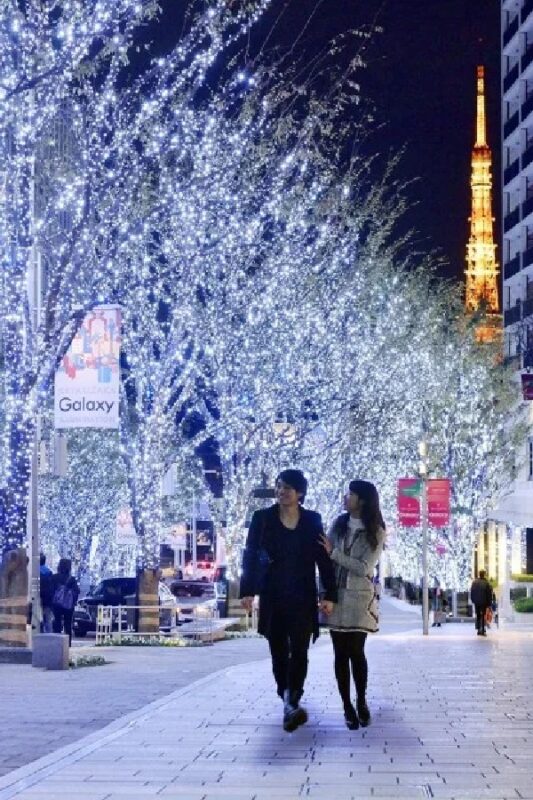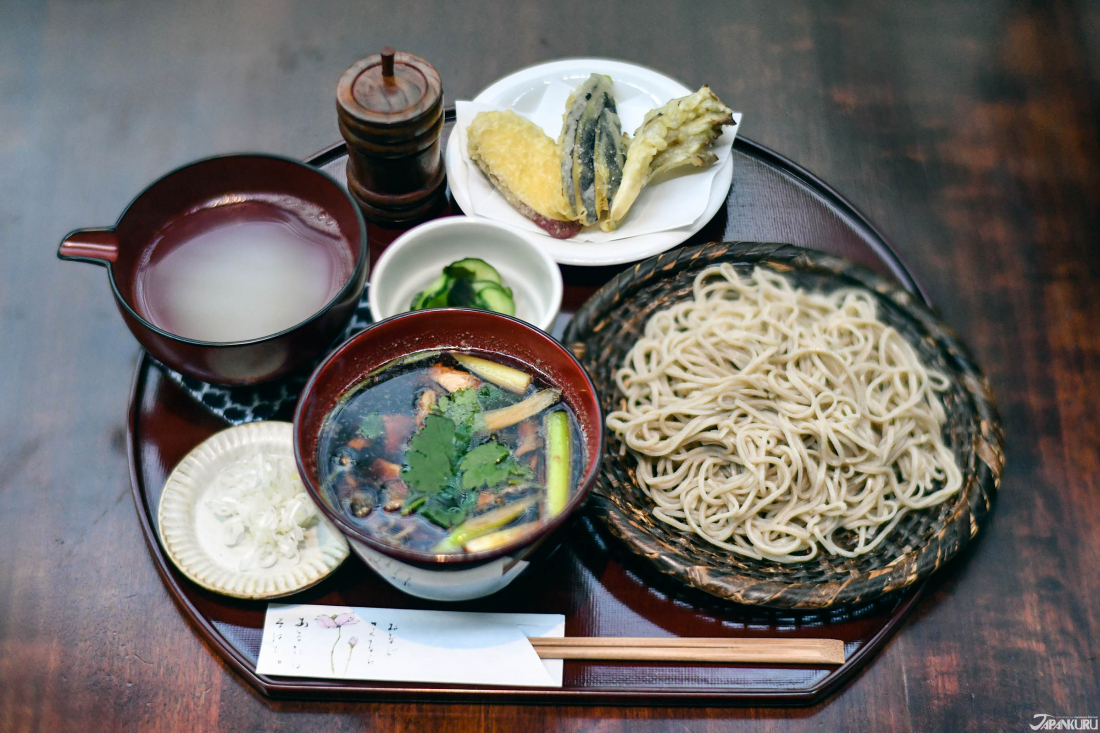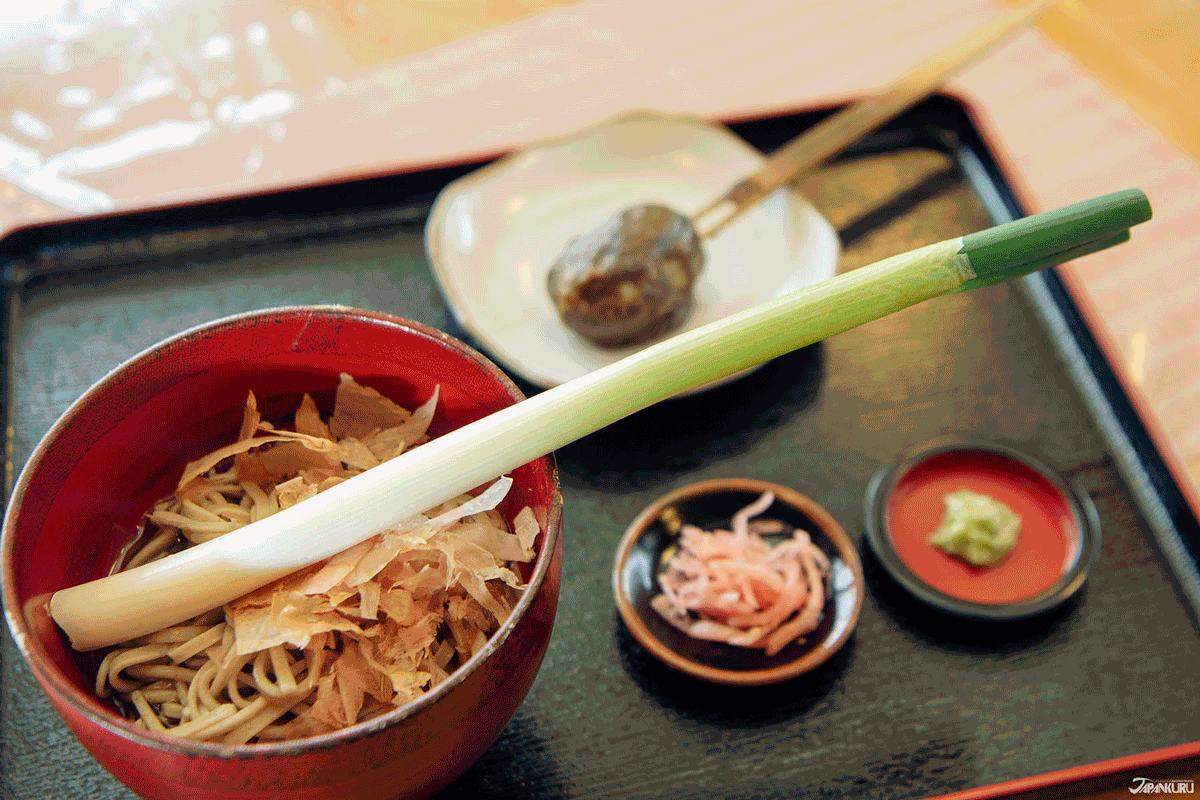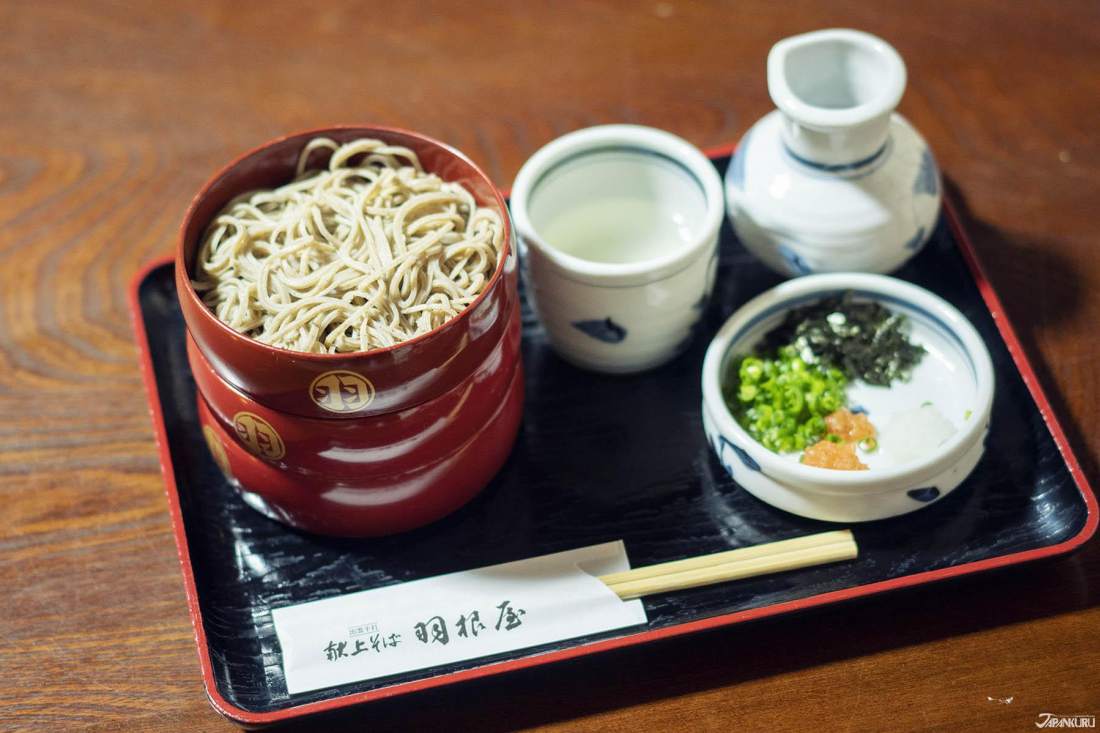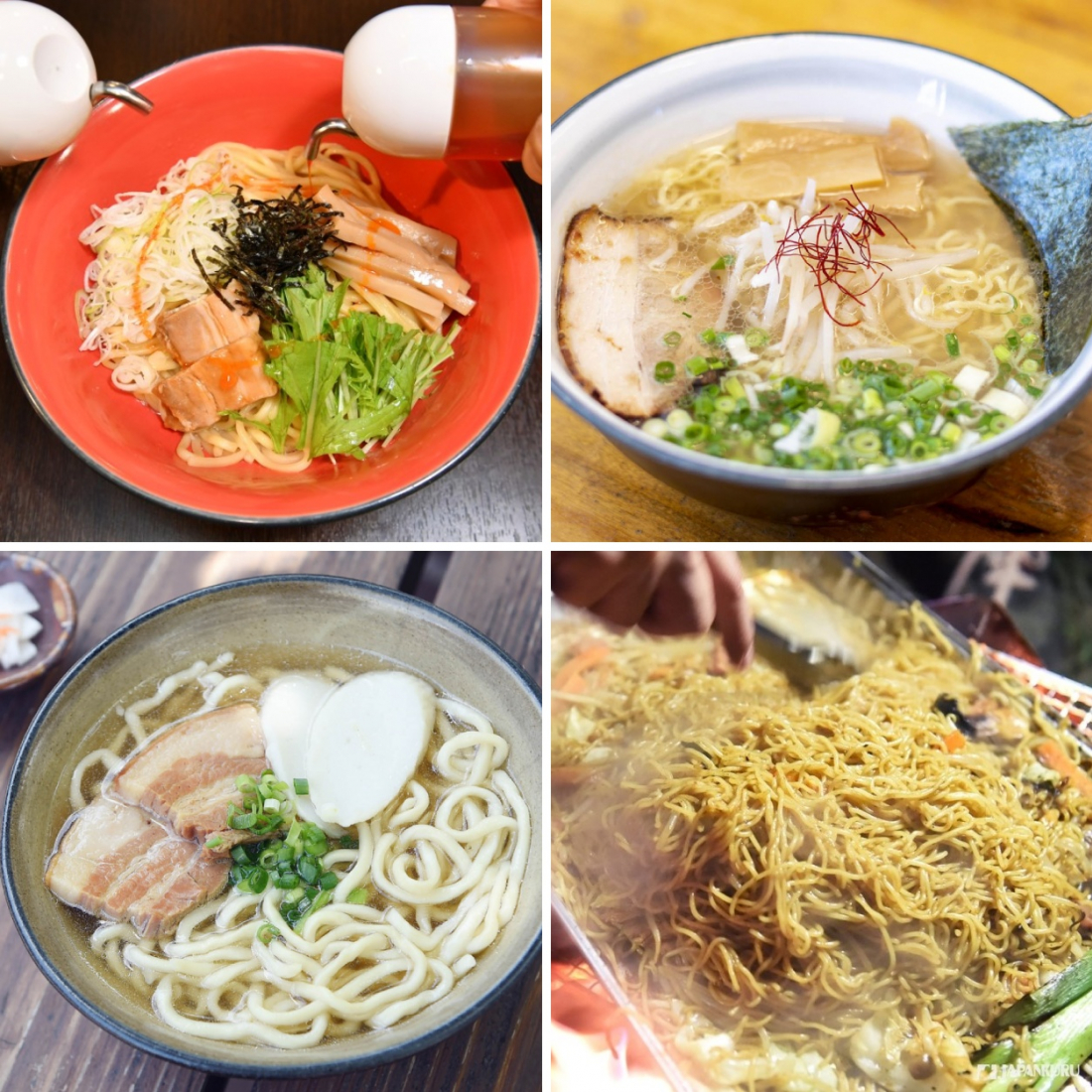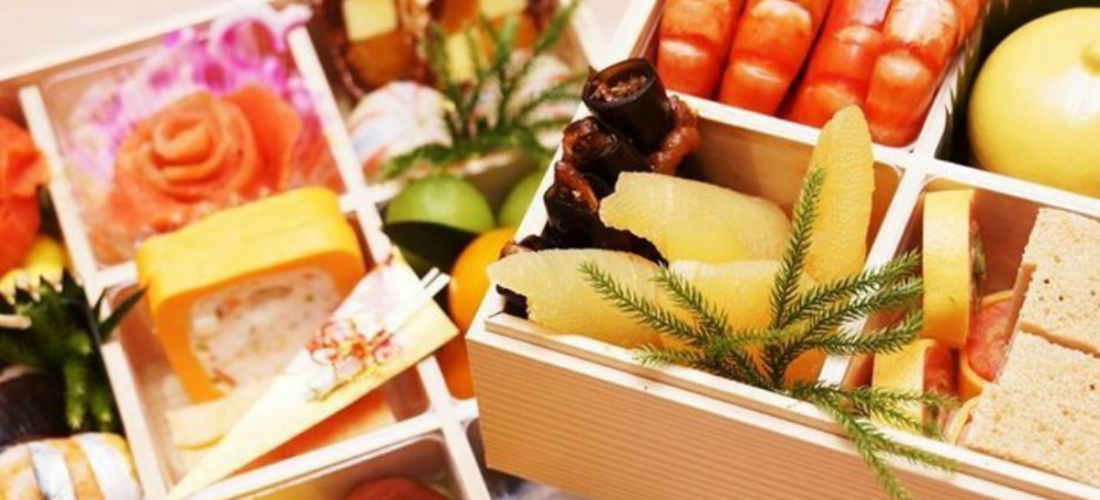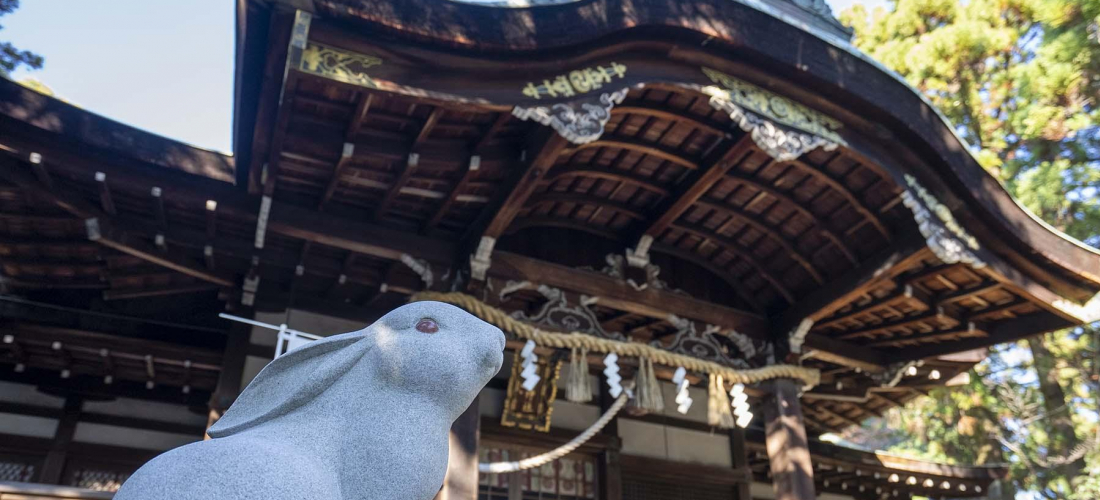CONTENTS
Japanese buckwheat soba noodles have long been a staple throughout the country, giving the dish plenty of time to evolve in plenty of delicious ways.
In Japanese, the word "soba" (蕎麦) means buckwheat, and the history of Japan's soba noodles goes back hundreds of years. The buckwheat noodles became popular in Japan during the Edo period (1603-1868), when samurai ruled the land, and soba helped make the Japanese diet more nutritionally complete for those wealthier citizens who preferred fancy white rice. Nowadays, while many travelers can picture the stretches of Japanese countryside that are covered in rice paddies, there are actually quite a few areas around the country that specialize in soba agriculture as well. These buckwheat fields spread as far as the eye can see, and burst into tiny white blooms at the end of summer.
Of course, while the traditional nature of soba noodles that many places serve similar bowls and platters of soba with simple broths and dipping sauces, the dish has also had plenty of time to expand and change. Read on for just a handful of the best ways to enjoy soba noodles in Japan!
① Toshikoshi Soba
Start the New Year right by ending the old one with soba noodles!
In Japan, soba noodles are often the last dish eaten before the New Year, a tradition dating back to the Edo period when the noodles were just becoming standard fare all around the country. The symbolism of this "toshikoshi soba" (年越しそば, literally "year-crossing" soba) has everything to do with how soba is made. Soba noodles aren't stretched, they're rolled out and cut, and the extremely low elasticity of the dough means that each noodle is cut away with a satisfying slice. Eating soba before midnight on New Year's Eve is said to help give you a nice clean break, cutting away the ties that held you to the previous year and any bad luck that might have tagged along with it, letting you start fresh in the New Year!
When it comes to the preparation of toshikoshi soba, there's no specific recipe, so people usually gravitate towards the basics: soba noodles in a simple dashi or soy sauce broth, or chilled on a "zaru" tray with dipping sauce, and served with common toppings like tempura shrimp and vegetables.
② Negi Soba
On the opposite side of the soba spectrum, things can get a little wacky. Soba noodles are a part of the local food culture in Fukushima's Aizu region thanks to vast fields of buckwheat that flourish throughout the southern part of the area, but in the little traditional village of Ouchijuku, the soba is extra special. Ouchijuku is the home of "negi-soba" (ネギ蕎麦), which might seem like a regular old bowl of soba in broth… until you see the utensil used to eat it, that is – because "negi" literally means "green onion." In Ouchijuku, it's tradition to eat soba noodles with a big spring onion in place of the more practical choice of chopsticks. A little bit of skill and some concentration are both necessary to get through the whole bowl of soba this way, but the green onion adds extra flavor, and you can even chomp down on it for some added intensity!
③ Oni Soba
Generally, when it comes to the noodles themselves, differences tend to be minor, and usually come down to slight changes in width or the addition of normal wheat flour in the dough (buckwheat content can range between about 70~100%). In the rural countryside of Kyoto, however, the uniquely thick and hearty noodles called oni soba (鬼そば) have long been a part of local Kumohara cuisine. Local legend says they were served to the local feudal lords as they made their way from nearby Tamba to the capital of Edo, and Onisobaya, the restaurant where the dish is said to have originated, has been advertising their oni soba since the Japanese Ansei period (mid-19th-century). The lords ate their soba with loach tempura, but these days one of the specialties at Onisobaya is oni soba with wild game meat, including surprisingly tender and delicate slices of venison, and meatballs made with wild boar. Between the solid bite and rustic feel of the thick noodles, and the flavorful wild game, oni soba offers a very different kind of soba experience.
Fans of traditional Japanese culture (or recent anime like Demon Slayer) might recognize the word "oni" and find themselves wondering why these noodles are, indeed, named "demon" soba. The truth is that it comes from a very old misunderstanding! Back in the day, the noodles were described using the word "kowai" (強い), which can mean stiff, tough, and inflexible – a logical way to talk about these particularly thick and chewy soba noodles. But that word is used less often these days, probably because "kowai" (written 怖い instead) can also mean "scary." Long ago, diners misunderstood when they heard about the "kowai" noodles, and assumed they were "scary noodles." For the Japanese citizenry of old, what could be scarier than a demon coming out of the woods? Thus, "oni soba" was born.
④ Soba Served with Style (Hegi Soba, Ita Soba, Warigo Soba)
Sometimes the fun of soba is all in how you eat it, and this is where there is truly a world of variety. Soba can be served in a bowl of hot soup, or a little bamboo tray with a cup of dipping sauce, or sometimes local traditions have taken over and provide a whole new way of eating the noodles. Like in some regions of Japan, where they prefer to skip the personal trays with individually portioned noodles, and go family-style instead! Travelers passing through Tendo, Yamagata, a city in Japan's northern Tohoku region, can order "ita soba" for a truly impressive soba spread. "Ita" (板) means board, and all the soba for the whole table is served together on a large rectangular tray, where everyone can grab mouthfuls of particularly firm Tendo-style noodles to dip in their own sauce dishes and gobble down. Hegi soba (へぎそば) offers a similar experience, and although the tradition of these soba noodles originates from nearby Niigata Prefecture, hegi soba has found broader popularity as well, and the Japankuru team ended up trying the dish farther south in Gunma Prefecture! The noodles for hegi soba are traditionally made with a dough that incorporates seaweed into each noodle, and in the end the soba is served in large quantities on a big, square tray. For big groups and big eaters, these are the soba noodles for you.
For those who would rather have a whole bunch of little servings, warigo soba (割子そば) is the way to go. This soba is served in a "warigo," a kind of traditional stacking lunchbox, and each diner receives their soba in their very own stack of dishes, one on top of another, along with a pitcher of sauce and a selection of condiments. After the flavor of the top tier of soba is perfected, and promptly devoured, the remaining sauce is poured right into the next dish, and so on and so forth until all the soba is eaten! Warigo soba is a local dish in Izumo, Shimane, around one of Japan's most famous shrines. When the Japankuru team visited, we headed to Haneya, which has been cooking up handmade soba noodles since the end of the Edo period, and was later praised by Emperor Taisho as "reflecting the aroma of the countryside."
For diners who really want to go through a lot of plates, however, there might be an even better option. Warigo soba is often served in stacks of three or five, which is already a lot, but up in Iwate Prefecture, "wanko soba" (わんこそば) is served in little bowls containing only about a mouthful of soba each. People sometimes go through dozens!
⑤ “Soba” That’s Not Really Soba (Yakisoba, Abura Soba, Chuka Soba, Okinawa Soba)
The word soba literally means buckwheat, but over the years since the Edo period, the association with soba noodles became so strong that the word just about developed a second definition. Years later, when Chinese noodles made their way over to Japan, the populace took one look at them and said "ah yes, soba," despite the noodles containing no buckwheat at all. Thus, a whole new kind of soba began to find its place in Japan.
These days, there are a number of noodle dishes in Japan that are made with regular old wheat noodles, and still referred to as soba. Ramen is one of them, and an alternate term for the dish (sometimes found on ramen shop menus) is chuka soba (中華そば), literally "Chinese soba." Ramen might seem quintessentially Japanese to an outsider, but it's actually often considered Chinese food in Japan! Similarly, the dish abura soba (油そば) is made with the same noodles, but these ones are served without soup, lightly tossed in a flavor-packed sauce that probably gives the name of the noodles its meaning: "oil soba." Yakisoba (焼きそば) is in the same boat – the name means fried soba, and these too are made with Chinese-style wheat noodles, but they're fried up on a griddle with cabbage, pork, and a sweet sauce before serving.
Chinese noodles aren't alone in earning the inaccurate title of "soba," however. Head down south, all the way to Japan's very own chain of beachy sun-soaked islands, and you'll find "Okinawa soba" (沖縄そば). These noodles look more like traditional Japanese udon noodles than the thin brown noodles made with buckwheat, but the dish tastes a little different from both, with its own unique Okinawa flavor profile. The noodles are served in a clear soup made with a pork and bonito broth, and toppings often include pork cuts of all kinds: belly, trotters, and even snouts! If you're not a fan of buckwheat, these soba noodles might be more up your alley.
Soba All Day Every Day
From traditional buckwheat to plain old wheat, tiny bowls to giant trays, delicate broths to rich sauces, and noodles thick and thin, the world of soba is a wide one. Start with toshikoshi soba on New Year's Eve, and enjoy it throughout the year as you travel to the north, west to Japan's ancient capital, and all the way to the islands far in the south – for the noodle lover on a mission, there's no end in sight!
For more info and updates from Japan, check Japankuru for new articles, and don't forget to follow us on Twitter, Instagram, and Facebook!
Details
NAME:Soba Noodles
COMMENT
FEATURED MEDIA
VIEW MORE 
A New Tokyo Animal Destination: Relax & Learn About the World’s Animals in Japan
#pr #japankuru #anitouch #anitouchtokyodome #capybara #capybaracafe #animalcafe #tokyotrip #japantrip #카피바라 #애니터치 #아이와가볼만한곳 #도쿄여행 #가족여행 #東京旅遊 #東京親子景點 #日本動物互動體驗 #水豚泡澡 #東京巨蛋城 #เที่ยวญี่ปุ่น2025 #ที่เที่ยวครอบครัว #สวนสัตว์ในร่ม #TokyoDomeCity #anitouchtokyodome

Shohei Ohtani Collab Developed Products & Other Japanese Drugstore Recommendations From Kowa
#pr #japankuru
#kowa #syncronkowa #japanshopping #preworkout #postworkout #tokyoshopping #japantrip #일본쇼핑 #일본이온음료 #오타니 #오타니쇼헤이 #코와 #興和 #日本必買 #日本旅遊 #運動補充能量 #運動飲品 #ช้อปปิ้งญี่ปุ่น #เครื่องดื่มออกกำลังกาย #นักกีฬา #ผลิตภัณฑ์ญี่ปุ่น #อาหารเสริมญี่ปุ่น

도쿄 근교 당일치기 여행 추천! 작은 에도라 불리는 ‘가와고에’
세이부 ‘가와고에 패스(디지털)’ 하나면 편리하게 이동 + 가성비까지 완벽하게! 필름카메라 감성 가득한 레트로 거리 길거리 먹방부터 귀여움 끝판왕 핫플&포토 스폿까지 총집합!
Looking for day trips from Tokyo? Try Kawagoe, AKA Little Edo!
Use the SEIBU KAWAGOE PASS (Digital) for easy, affordable transportation!
Check out the historic streets of Kawagoe for some great street food and plenty of picturesque retro photo ops.
#pr #japankuru #도쿄근교여행 #가와고에 #가와고에패스 #세이부패스 #기모노체험 #가와고에여행 #도쿄여행코스 #도쿄근교당일치기 #세이부가와고에패스
#tokyotrip #kawagoe #tokyodaytrip #seibukawagoepass #kimono #japantrip

Hirakata Park, Osaka: Enjoy the Classic Japanese Theme Park Experience!
#pr #japankuru #hirakatapark #amusementpark #japantrip #osakatrip #familytrip #rollercoaster #retrôvibes #枚方公園 #大阪旅遊 #關西私房景點 #日本親子旅行 #日本遊樂園 #木造雲霄飛車 #히라카타파크 #สวนสนุกฮิราคาตะพาร์ค

🍵Love Matcha? Upgrade Your Matcha Experience With Tsujiri!
・160년 전통 일본 말차 브랜드 츠지리에서 말차 덕후들이 픽한 인기템만 골라봤어요
・抹茶控的天堂!甜點、餅乾、飲品一次滿足,連伴手禮都幫你列好清單了
・ส่องมัทฉะสุดฮิต พร้อมพาเที่ยวร้านดังในอุจิ เกียวโต
#pr #japankuru #matcha #matchalover #uji #kyoto #japantrip #ujimatcha #matchalatte #matchasweets #tsujiri #말차 #말차덕후 #츠지리 #교토여행 #말차라떼 #辻利抹茶 #抹茶控 #日本抹茶 #宇治 #宇治抹茶 #日本伴手禮 #抹茶拿鐵 #抹茶甜點 #มัทฉะ #ของฝากญี่ปุ่น #ชาเขียวญี่ปุ่น #ซึจิริ #เกียวโต

・What Is Nenaito? And How Does This Sleep Care Supplement Work?
・你的睡眠保健品——認識「睡眠茶氨酸錠」
・수면 케어 서플리먼트 ‘네나이토’란?
・ผลิตภัณฑ์เสริมอาหารดูแลการนอน “Nenaito(ネナイト)” คืออะไร?
#pr #japankuru #sleepcare #japanshopping #nenaito #sleepsupplement #asahi #睡眠茶氨酸錠 #睡眠保健 #朝日 #l茶胺酸 #日本藥妝 #日本必買 #일본쇼핑 #수면 #건강하자 #네나이토 #일본영양제 #อาหารเสริมญี่ปุ่น #ช้อปปิ้งญี่ปุ่น #ร้านขายยาญี่ปุ่น #ดูแลตัวเองก่อนนอน #อาซาฮิ

Japanese Drugstore Must-Buys! Essential Items from Hisamitsu® Pharmaceutical
#PR #japankuru #hisamitsu #salonpas #feitas #hisamitsupharmaceutical #japanshopping #tokyoshopping #traveltips #japanhaul #japantrip #japantravel

Whether you grew up with Dragon Ball or you just fell in love with Dragon Ball DAIMA, you'll like the newest JINS collab. Shop this limited-edition Dragon Ball accessory collection to find some of the best Dragon Ball merchandise in Japan!
>> Find out more at Japankuru.com! (link in bio)
#japankuru #dragonball #dragonballdaima #animecollab #japanshopping #jins #japaneseglasses #japantravel #animemerch #pr

This month, Japankuru teamed up with @official_korekoko to invite three influencers (originally from Thailand, China, and Taiwan) on a trip to Yokohama. Check out the article (in Chinese) on Japankuru.com for all of their travel tips and photography hints - and look forward to more cool collaborations coming soon!
【橫濱夜散策 x 教你怎麼拍出網美照 📸✨】
每次來日本玩,是不是都會先找旅日網紅的推薦清單?
這次,我們邀請擁有日本豐富旅遊經驗的🇹🇭泰國、🇨🇳中國、🇹🇼台灣網紅,帶你走進夜晚的橫濱!從玩樂路線到拍照技巧,教你怎麼拍出最美的夜景照。那些熟悉的景點,換個視角說不定會有新發現~快跟他們一起出發吧!
#japankuru #橫濱紅磚倉庫 #汽車道 #中華街 #yokohama #japankuru #橫濱紅磚倉庫 #汽車道 #中華街 #yokohama #yokohamaredbrickwarehouse #yokohamachinatown

If you’re a fan of Vivienne Westwood's Japanese designs, and you’re looking forward to shopping in Harajuku this summer, we’ve got important news for you. Vivienne Westwood RED LABEL Laforet Harajuku is now closed for renovations - but the grand reopening is scheduled for July!
>> Find out more at Japankuru.com! (link in bio)
#japankuru #viviennewestwood #harajuku #omotesando #viviennewestwoodredlabel #viviennewestwoodjapan #비비안웨스트우드 #오모테산도 #하라주쿠 #日本購物 #薇薇安魏斯伍德 #日本時尚 #原宿 #表參道 #japantrip #japanshopping #pr

Ready to see TeamLab in Kyoto!? At TeamLab Biovortex Kyoto, the collective is taking their acclaimed immersive art and bringing it to Japan's ancient capital. We can't wait to see it for ourselves this autumn!
>> Find out more at Japankuru.com! (link in bio)
#japankuru #teamlab #teamlabbiovortex #kyoto #kyototrip #japantravel #artnews
Photos courtesy of teamLab, Exhibition view of teamLab Biovortex Kyoto, 2025, Kyoto ® teamLab, courtesy Pace Gallery

Japanese Makeup Shopping • A Trip to Kamakura & Enoshima With Canmake’s Cool-Toned Summer Makeup
#pr #canmake #enoshima #enoden #에노시마 #캔메이크 #japanesemakeup #japanesecosmetics

⚔️The Robot Restaurant is gone, but the Samurai Restaurant is here to take its place. Check it out, and don't forget your coupon!
🍣신주쿠의 명소 로봇 레스토랑이 사무라이 레스토랑으로 부활! 절찬 쿠폰 발급중
💃18歲以上才能入場的歌舞秀,和你想的不一樣!拿好優惠券去看看~
#tokyo #shinjuku #samurairestaurant #robotrestaurant #tokyotrip #도쿄여행 #신주쿠 #사무라이레스토랑 #이색체험 #할인이벤트 #歌舞伎町 #東京景點 #武士餐廳 #日本表演 #日本文化體驗 #japankuru #japantrip #japantravel #japanlovers #japan_of_insta

Japanese appliance & electronics shopping with our KOJIMA x BicCamera coupon!
用JAPANKURU的KOJIMA x BicCamera優惠券買這些正好❤️
코지마 x 빅 카메라 쿠폰으로 일본 가전 제품 쇼핑하기
#pr #japankuru #japanshopping #kojima #biccamera #japaneseskincare #yaman #dji #osmopocket3 #skincaredevice #日本購物 #美容儀 #相機 #雅萌 #日本家電 #일본여행 #면세 #여행꿀팁 #일본쇼핑리스트 #쿠폰 #일본쇼핑 #일본브랜드 #할인 #코지마 #빅카메라 #japankurucoupon
MAP OF JAPAN
SEARCH BY REGION

LATEST
VIEW MOREEVENT CALENDAR
VIEW MORE